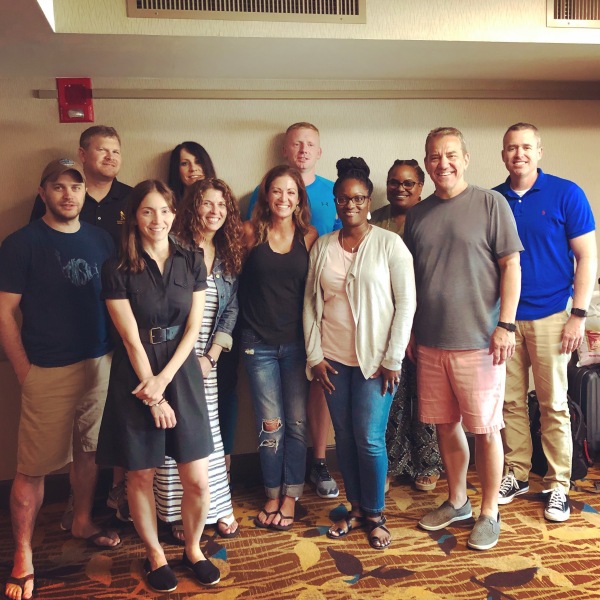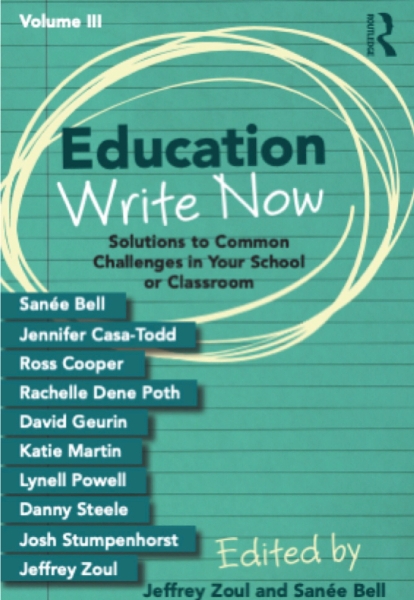“The great force of history comes from the fact that we carry it within us, are unconsciously controlled by it…History is literally present in all that we do.” James Baldwin
We all have bias. Implicit bias is the automatic thoughts we have about others based on a variety of factors. These are things we don’t even think about and this is what makes implicit bias a significant barrier to the experiences, expectations, and achievement of students. There are many resources available to educators about the importance of being culturally responsive and inclusive; however, it is impossible to be culturally responsive if you are culturally unaware and not in tune with how our implicit bias impacts how we engage with others.
This topic is very personal to me as an educator and a parent. I have experienced the effects of implicit bias personally and through the eyes of my children. These experiences were the driving force behind the chapter I wrote for Education Write Now Volume 3: Solutions to Common Challenges in Your School or Classroom. Having worked on this project for the past 2 summers, I wanted to share a topic that needs to be addressed boldly. Education Write Now is a collaborative project that brings together 10 thought leaders in the field of education with the challenge of writing 10 different chapters that will contribute to advancing a school of thought and actions in the field of education. All of the proceeds from this project go to The Will to Live Foundation, a nonprofit organization dedicated to preventing teen suicide by improving the lives and the “Will To Live” of teenagers through education about mental health and encouraging them to recognize that love and hope exist in the relationships we have with each other. With so many students being marginalized at school each day, I can’t think of a better topic to bring to the forefront of the minds of educators than to address how implicit bias is crippling and limiting the potential of so many students.

Below is an excerpt from my chapter:
“One of the challenges that many school leaders face is trying to solve the vast problems that present themselves in their schools or classrooms. The schoolhouse is a microcosm of society, so societal issues will inevitably become school issues that educators will have to address. Knowing how to tackle every issue can be extremely overwhelming for a leader because everyone is looking to him or her for guidance and direction. Being able to “fix” everything is not possible for educators because we all have different life experiences that affect how we view the world.
On one occasion, I got a call from a colleague seeking advice about an issue she was facing. She was extremely frustrated because she had done everything she knew to do to try to solve this issue and nothing was working. She seemed to be in a helpless state when she called me for advice. She began to share with me that she had a group of black female students who were not responsive to any of the interventions that were put in place to improve their behavior. She said the students traveled in a pack and they were loud and disrespectful to anyone with authority. Her administrative staff had tried every consequence that was available to them to correct the behavior, but nothing worked. My colleague was at a point of no return, so she called me because she felt she had nowhere else to go. Now, for the purpose of this conversation, it is important to know that my colleague is white, and I am a black female. This is important to the story because in a moment of need, I was the only person of color she felt comfortable being vulnerable with and it was her hope that I had some insight and perspective about how to reach her students. I will never forget the question she asked me after she shared her struggle, “I have done all that I know to do. Am I missing something?”
It took me a few seconds to respond because I was expecting her struggle to be related to instruction or general leadership, not about how to connect with black female students. As we began to unpack her question together, I shared some strategies and pointed her to resources that she could use to educate herself. Shortly after talking about this topic with my colleague, I had the same exact conversation with another principal friend having the same issue. The questions I began to ask myself include:
- Why are people having a difficult time engaging with students of color?
- Is there something occurring systemically in our schools that is making this issue more common?
- What is my role and responsibility in offering perspective on the issue?
I felt compelled to dive into this topic further and what I learned from talking with some of my staff and other principal colleagues is that educators, who are not members of marginalized groups, feel inadequately prepared to make connections with students of color in ways that make the greatest impact. Racial equity issues have always been a sensitive topic to discuss in our schools. It is like the elephant in the room that everyone sees and smells but no one does anything to remove. People become immune to the sight and smell of the elephant and learn to work around it.
The complexity and sensitive nature of race exist because of our inability to discuss it from multiple perspectives. Until we really open ourselves up to having the conversation about how race and ethnicity impact the experiences of students and teachers in our schools, we will continue to create schools that perpetuate racial inequity and social injustice. Our greatest challenges and fears cannot be addressed until we become critically aware of our own implicit bias and how our racial and ethnic perspectives impact how we see the world and engage with others.”
After working on this project for three years in a row, I am once again surprised at how well the chapters link together. Check out excerpts from Lynell Powell, Rachelle Poth, Jennifer Casa-Todd, Josh Stumpenhorst, Jeff Zoul, and David Guerin. Stay tuned for next week’s post from Ross Cooper.

I am looking forward to year four of this project. I would like to thank Jeff for really spearheading this idea and execution of this project for the past 3 years. It has been a pleasure serving as a sidekick to this great leader! Jeff will be signing off as co-editor, and I will take the lead as we invite a new team of nine to continue this great work started three years ago. I want to especially thank Routledge and Senior Editor Lauren Davis for your continued commitment and dedication to this project. Be sure that you have Education Write Now Volume I and II in your personal library. Education Write Now Volume III: Solutions to Common Challenges in Your School or Classroom will be available this winter.

One thought on “The Unthinkable and Unspoken Barrier to Student Success”